When it comes to the adjustment made, the adjusted trial balance sheet is left with information that is relevant for a particular period as per the information that the business organization seeks. The adjustments made, however, are classified into different categories, which include – deferrals, accruals, missing transactions, and tax adjustments. After the adjusted trial balance is complete, we next prepare the company’s financial statements.
Thesecredit balances would transfer to the credit column on the adjustedtrial balance. An adjusted trial balance is a listing of the ending balances in all accounts after adjusting entries have been prepared. When accounts are prepared at the end of the accounting tax sheltered annuities and 403 b plans explained period, ledger balances must be updated with relevant adjustments, which are the results of the partial transaction, improper transactions, and skipped transactions.
We get clear information from trial balance about debit entries and credit entries. But there is some more information required to adjust the trial balance. The next type of adjustment is the accrual, which ensures inclusion of the future payments that the business entity is entitled to make.
Step 1: Run an unadjusted trial balance
To get the numbers in these columns, you take the number in the trial balance column and add or subtract any number found in the adjustment column. There is no adjustment in the adjustment columns, so the Cash balance from the unadjusted balance column is transferred over to the adjusted trial balance columns at $24,800. Interest Receivable did not exist commission vs salary in the trial balance information, so the balance in the adjustment column of $140 is transferred over to the adjusted trial balance column. The adjustments total of $2,415 balances in the debit and credit columns. Presentation differences are most noticeable between the two forms of GAAP in the Balance Sheet.
4: Use the Ledger Balances to Prepare an Adjusted Trial Balance
- For more about these and other accounting software options, check out our accounting software reviews.
- This can result in a balance increasing when it should be decreasing leaving you with incorrect numbers at the end of an accounting period.
- The balance sheet is classifying the accounts by type of accounts, assets and contra assets, liabilities, and equity.
- For Printing Plus, the following is its January 2019 Income Statement.
Accumulated Depreciation–Equipment ($75), Salaries Payable ($1,500), Unearned Revenue ($3,400), Service Revenue ($10,100), and Interest Revenue ($140) all have credit final balances in their T-accounts. These credit balances would transfer to the credit column on the adjusted trial balance. For example, Interest Receivable is an adjusted account that hasa final balance of $140 on the debit side. This balance istransferred to the Interest Receivable account in the debit columnon the adjusted trial balance. AccumulatedDepreciation–Equipment ($75), Salaries Payable ($1,500), UnearnedRevenue ($3,400), Service Revenue ($10,100), and Interest Revenue($140) all have credit final balances in their T-accounts.
Related AccountingTools Courses
Preparing an adjusted trial balance is thesixth step in the accounting cycle. An adjusted trialbalance is a list of all accounts in the general ledger,including adjusting entries, which have nonzero balances. Thistrial balance is an important step in the accounting processbecause it helps identify any computational errors throughout thefirst five steps in the cycle. Once you have a completed, adjusted trial balance in front of you, creating the three major financial statements—the balance sheet, the cash flow statement and the income statement—is fairly straightforward. Treat the income statement and balance sheet columns like a double-entry accounting system, where if you have a debit on the income statement side, you must have a credit equaling the same amount on the credit side. In this case we added a debit of $4,665 to the income statement column.
Preparing an Adjusted Trial Balance: A Guide
As with the unadjusted trial balance, transferring informationfrom T-accounts to the adjusted trial balance requiresconsideration of the final balance in each account. If the finalbalance in the ledger account (T-account) is a debit balance, youwill record the total in the left column of the trial balance. Ifthe final balance in the ledger account (T-account) is a creditbalance, you will record the total in the right column. Looking at the income statement columns, we see that all revenue and expense accounts are listed in either the debit or credit column. This is a reminder that the income statement itself does not organize information into debits and credits, but we do use this presentation on a 10-column worksheet.
However, it is the source document if you are manually compiling financial statements. In the latter case, the adjusted trial balance is critically important – financial statements cannot be constructed without it. While you can create an adjusting trial balance manually, or by using spreadsheet software, it’s far easier to do so when using accounting software. Here are some of The Ascent’s top picks for creating an adjusted trial balance. In addition, your adjusted trial balance is used to prepare your closing entries, which is the next step in the accounting cycle.

